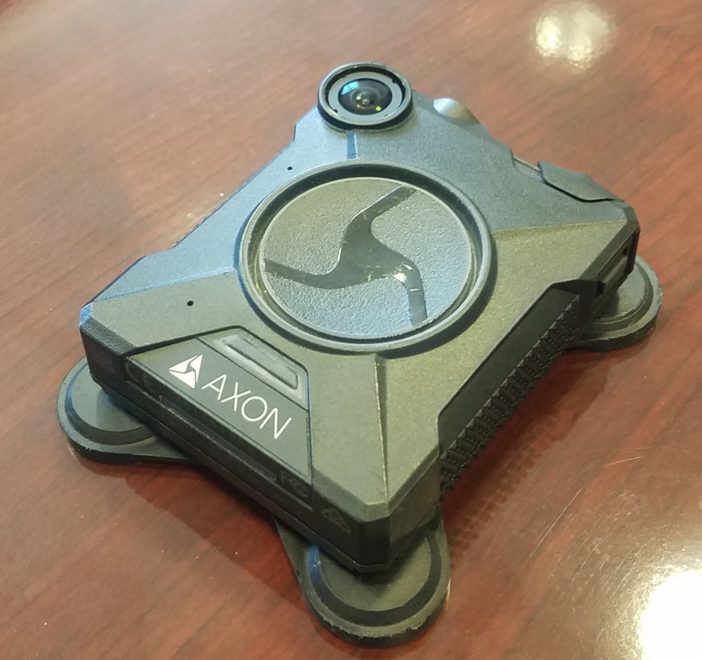For close to three years, body worn cameras have been standard equipment for Pasadena Police officers.
The cameras capture audio and video of interactions between the police and the public and Pasadena officers are essentially required to activate their cameras during all calls for service, traffic stops, interviews, detentions, arrests and searches.
“It is no different than slapping a gun belt on and a Taser,” said Pasadena Police Sgt. Roger Roldan, the department’s use of force expert. “It’s just another piece of equipment we’re obligated to carry. It’s helped (officers) more than it’s harmed them.”
The cameras seem to have helped the public as well.
Since Nov. 7, 2016 when PPD equipped every officer with body worn cameras, which are roughly the size of a pack of cigarettes, the devices have captured a combined 304,089 videos totaling 43,219 hours over 1,800 consecutive days.
“Some officers may wear their body worn cameras during their whole shift and never turn it on,” said Cmdr. Jason Clawson, who is monitoring the program. “Motorcycle officers sometimes pull over 30 people a day. They are going to have over 30 videos.”
In 2016, prior to the cameras being used, there were 6,796 arrests and 45 uses of force (punches, kicks, batons, tasers, pepper spray, firearms, 40 MM impact rounds), Cmdr. Jason Clawson said.
In all of 2017, officers made 6,408 arrests with 44 uses of force.
From Jan.1, 2018, through Oct. 3, 2018, there were 5,666 arrests with 25 incidents of force.
In 2019, PPD has seen a 26 percent reduction in force from 2017. Kicks and strikes are down 77 percent, Clawson said.
“I think we have really good outcomes” Clawson said. “Less officers (are) being hurt.”
The cameras raise the department’s level of accountability and transparency, the commander said.
Pasadena PD posts video footage of critical incidents on it is website for the public to view.
Video evidence is crucial when reviewing complaints related to officer conduct and potential litigation, he said.
Recordings may also capture important evidence related to criminal activity in support of prosecution.
Additionally, recordings of critical incidents is used for analysis and training.
Following every contact in which force is used, the department holds a critical de-briefing of the incident with everyone involved reviewing the video footage to determine what, if anything could have been done differently.
The chief also renders a final decision whether or not the force was in policy.
“You get something out of watching tape of yourself,” Roldan said. “In most uses of forces, there is more than one officer on scene and you get two, three and four different angles. You get the opportunity to watch on screen how you perform. Most of the time, any training issues, they identify by themselves without me every having to say a word.”
Before forming a policy on when the cameras are to be activated, Pasadena PD examined policies from 15 other police agencies and sought input from the Public Safety Committee, Community Clergy Coalition, Service Area Advisory Councils, Latino Pastors, Lexipol and the community as a whole.
But there are limitations, said Clawson, citing a 2014 article published by the Force Science Institute, considered the gold standard in analyzing use of force incidents by peace officers.
Cameras don’t follow the officer’s eyes or see the way the officer sees.
For example, a body camera may capture a broad scene but can’t record where an officer is looking within that scene at a given instant.
An officer may not see as well as a camera does in low light.
Camera speed is different than real time and a camera records only 2-D and may make objects appear closer than they actually are or compress distances between objects.
“Sometimes what you see on the body worn camera is a one dimensional, maybe two-dimensional perspective, not really what’s going on around you, outside background noise … when you are wearing a body-worn camera, it’s not a be-all, end-all,” Clawson said.
Also, one camera might not be enough.
The bottom line is that a video does not replace a good investigation, the article stated.
“It gets us better at making critical decisions instantaneously,” Clawson said. “You see something and you either react or don’t react, Clawson said. “And that non reaction, can cause your own death.”
 Behind the Badge
Behind the Badge





